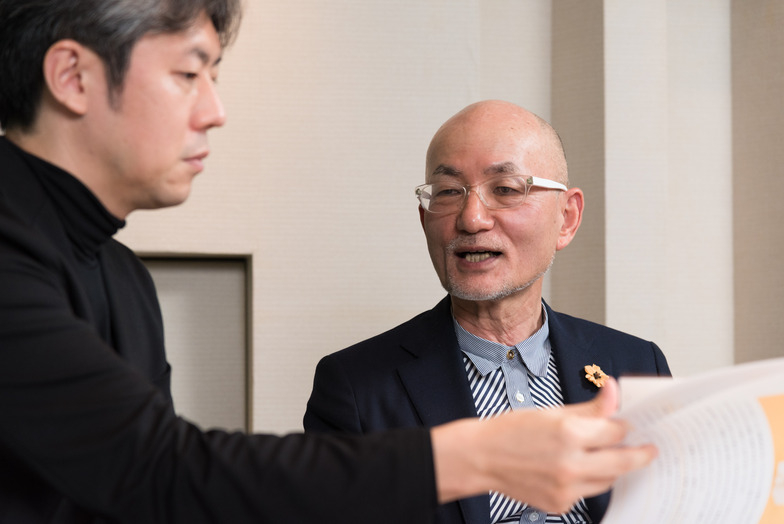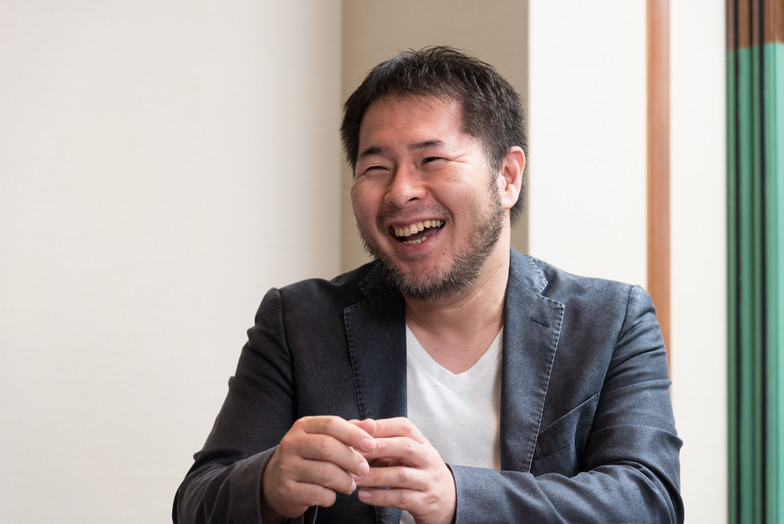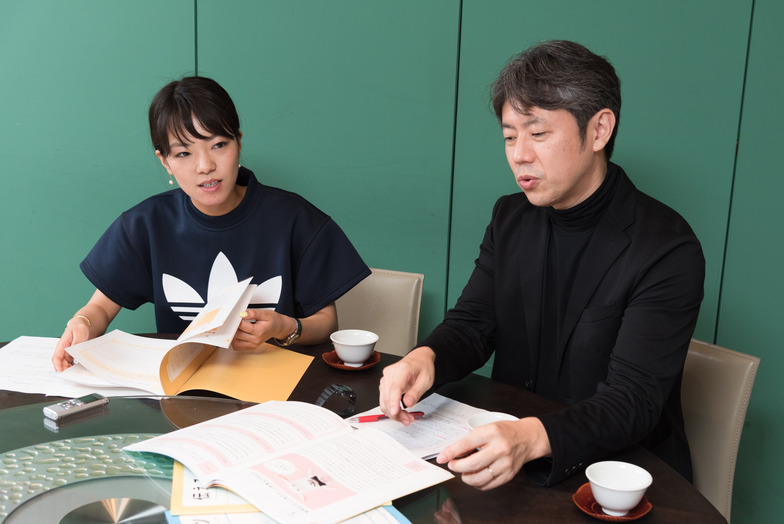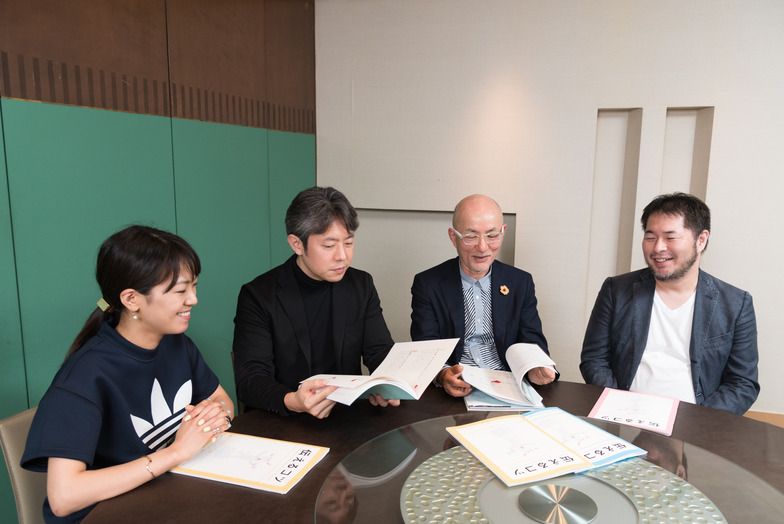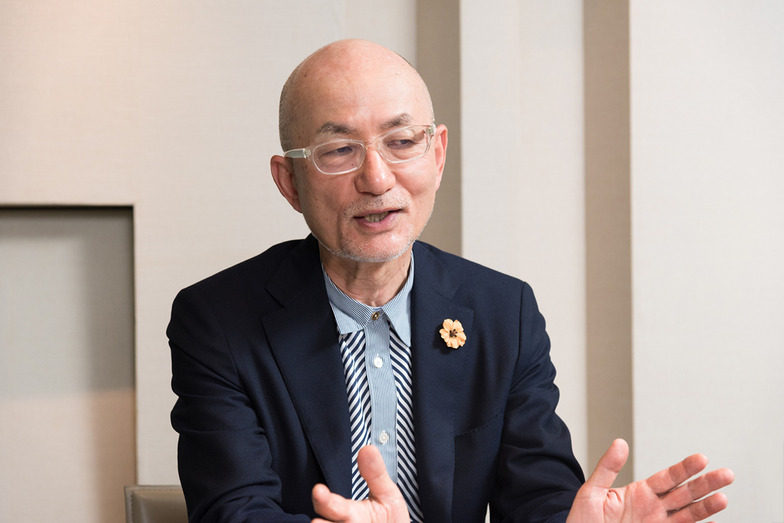Shirato: When creating ads for companies, if it's a food product, you can buy and eat it to immediately understand it from the consumer's perspective. But with NPOs, gaining that basic understanding was tough. I got involved with several organizations—issues like child labor, support for Bangladesh—making personal donations, becoming a board member, attending meetings.
Back in the day, they used to say, "Write ad copy with your feet, not at your desk." That meant walking out and doing thorough research. When launching "The Art of Communication," I approached it with the same mindset – you absolutely have to hear those raw, unfiltered voices. Participating in that way finally gave me a real sense of the terrain.
Moreover, many of the people working hard there were fascinating individuals you rarely find in the business world. Their motivations were clear: someone with a child with disabilities, or someone who saw people living in terrible conditions in Bangladesh and wanted to do something about it. It's remarkable that they genuinely dove in and kept going, where most people would give up despite having the desire. I was surprised to discover such people existed.
Fukui: So your hands-on approach to work, Shiroto-san, really paid off here too.
Shirato: Getting involved, I was surprised to find that the "Katakana word culture" typical of ad agencies didn't fly here. Terms like "branding," "concept," and "marketing" apparently smelled like money (laughs). They could easily be interpreted as "You guys use that kind of language for business."
Actually, receiving the initial feedback, "Please avoid using difficult Katakana words," significantly deepened our mutual understanding.
Design with Imperfections, Not Overly Polished
Fukui: I'd like to ask copywriter Fujimoto, who inherited Shiroto-san's "Communication Tips" and revised this booklet. What prompted you?
Fujimoto: It started when I was invited by someone who was like a mentor to me when I was new to the field. I myself hadn't really been involved in social contribution before, so I thought it might be a chance to do something useful for society.
Our job is to communicate, so we deliver the messages we create to many people's hearts. However, we rarely get the experience of receiving a direct reaction or gratitude from the person right in front of us. I feel the opportunity to communicate directly with NPO members is precious.
Fukui: I heard you also led workshops as an instructor yourself. How was the response?
Fujimoto: People told me it was "easy to understand." Afterwards, they gathered around and asked various questions. It felt like returning to the very essence of communication—speaking face-to-face with words.
Fukui: Art Director Matsunaga, what were your considerations when designing the booklet?
Matsunaga: While I create posters for work, I'd never done book design or editorial layout before, so I was very interested.
The "Tips for Effective Communication" text states, "Truly good design means arranging information in the most readable way, from the reader's perspective." While working on the booklet, I read its content, and this was a valuable learning experience.
I'm a bit of an "award junkie," and in the past, my design goals would often default to winning "advertising awards." Through the renewal process, I truly came to understand that what matters most is effective communication with the reader, and I learned about design that isn't self-centered.
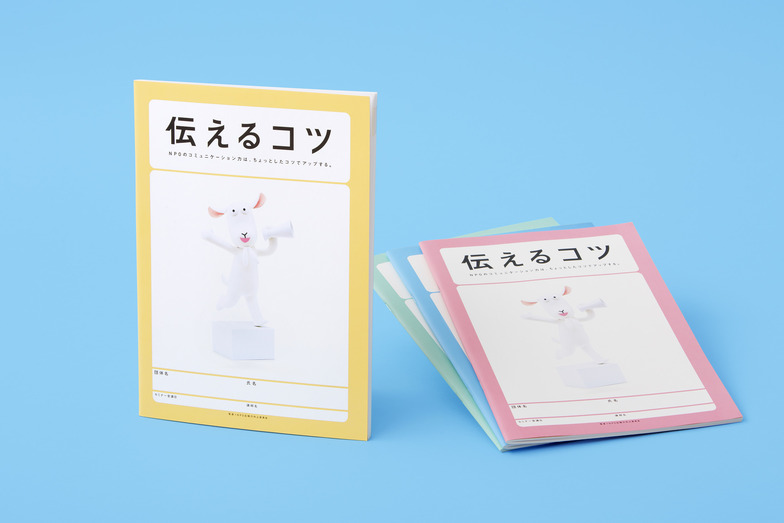
"Tips for Effective Communication" Text
Fukui: It's formatted like an elementary school student's notebook, isn't it?
Matsunaga: We designed it so people can write in it without hesitation. We have them write the group name, their name, the seminar date, and the instructor's name on the cover first.
Fukui: That's thoughtful—making it feel like their own.
Matsunaga: We also prioritized "flexibility." If the design is too rigid, it becomes hard to write in, so we intentionally left space. We also used slightly thinner paper, thinking that if it were too thick, people might hesitate to write on it.
Fukui: By the way, was this revision work considered part of your "official duties"?
Fujimoto: Yes, it was recognized as part of my duties. Being able to contribute to society during work hours is a privileged environment. That said, when other tasks were busy, they naturally took priority, which delayed the revision work. Still, I'm proud that this kind of work exists as part of the company's mission.
Shirato: In the U.S., until around the early 1980s, someone working at an ad agency who handled half public sector work and half commercial advertising was considered a true professional. Even at the Cannes Lions Awards, there used to be separate categories for public and commercial work, and if you didn't win a Grand Prix in both, you were considered "half-baked." In that sense, being involved in public communication is incredibly important.
The Key to Success: "Contributing to the Core Business"
Fukui: What content is unique to this latest edition?
Fujimoto: Reflecting the changes of the past five years, we've added new sections on social media and PR techniques. Another theme we added, based on feedback from NPOs, is collaboration and consultation. Since the Great East Japan Earthquake, the way NPOs tackle challenges has changed, so we felt this needed to be reflected in a new edition. We've also included messages about what NPOs should be like going forward in the form of "columns."
Fukui: Looking back, what do you think are the key points that have sustained it for 12 years?
Shirato: For the 5th anniversary, we held a "Communication Tips" contest in the Dentsu Inc. 1st floor hall. Participants submitted posters before and after the workshop to compare how much they improved. Seeing that the key points we taught were properly applied, combined with their own creative touches, was incredibly rewarding.
Fujimoto: For "Communication Tips," NPO members work alongside Dentsu Inc. staff, and the organization is surprisingly flat. People from various positions voice their opinions, and we revise things repeatedly until all perspectives are reflected. This approach, different from business practices, felt refreshing.
Revising this booklet was the same—we'd show them the draft, they'd give us all kinds of feedback, and we'd go back and redo it.
Fukui: Honestly, didn't you ever feel like, "Give me a break"?
Fujimoto: The feedback was so valuable, we couldn't just ignore it. The NPO members brought perspectives we don't have in the advertising industry, so it was personally educational for me too.
Shirato: As Fujimoto-san said, the fundamental strength was that we operated on a level playing field, discussing things openly with the NPO members.
Design, when taken to its extreme, boils down to personal taste, but it's really about visualizing solutions. The more multifaceted the evaluation—including whether it's useful or not—the better the final product becomes.
NPOs are often seen tackling tough social problems, but some also organize children's festivals. There should be opportunities ahead to solve social issues in fun, engaging ways.
Furthermore, companies can no longer ignore CSR and will increasingly adopt NPO-like approaches. We should be able to contribute our Dentsu Inc. skills to help shops, schools, communities, and others who struggle to effectively communicate their own stories.
Fukui: The key point was deciding early on to "contribute to society through Dentsu Inc.'s core business," wasn't it?
Shirato: Back then, there was a mood like, "Social contribution? Let's just plant trees." But the more conscious companies were thinking, "What kind of social contribution can only we do?" It was huge that we could anchor ourselves from the start on "contributing through our core business" and "sharing communication methods with NPOs."
Above all, we realized our skills weren't just for clients—they could benefit society. That's huge.
Lately, I've noticed some people are just too good at presentations. They master PowerPoint and speak eloquently. But whether they truly possess the "art of communication" is another matter. Often, these very people don't articulate their vision, and their passion doesn't come through. That's why I believe the "art of communication" will remain crucial going forward.
Fukui: Precisely because we've contributed through our core business, we've created a system where anyone from any department can offer their expertise.
While corporate careers eventually end, participating in an NPO means there's no "retirement age" for me. To properly confront the challenges society faces as a citizen, I want to continue contributing to these kinds of activities.
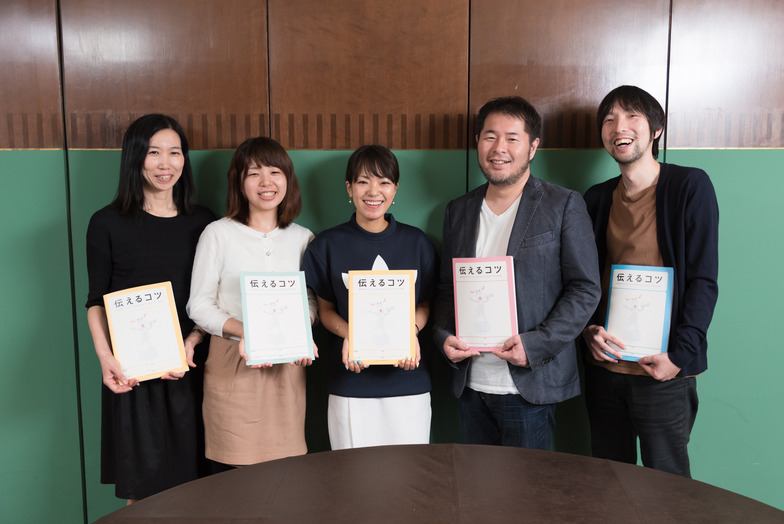
The editing team for the third edition of "The Art of Communication," from left: Hitomi Omoto (Dentsu Creative Force), Natsuki Iikuni (Dentsu Inc.), Miharu Matsunaga (Dentsu Inc.), Munemasa Fujimoto (Dentsu Inc.), Tomoyuki Torisu (Dentsu Inc.)
Many people beyond those appearing in this roundtable discussion have been involved with "Tips for Effective Communication." We asked former Dentsu Inc. instructors (including former Dentsu Inc. employees) about their own "tips for effective communication."
■Shigetomi Ishida, Director, 2nd CR Planning Bureau
Tip: Before communicating, show it to a friend. After communicating, ask the recipient for feedback.
■Koichi Ito, Executive Creative Director, 3rd CR Planning Bureau
Tip: Instead of addressing an unspecified audience, visualize a specific person and craft your message for them.
■Tatsuya Okamoto, Head of Customer Business Division & Strategic Creative Director, Chubu Branch
Tip: Think of the other person as you would a child and "match their eye level."
■Takahisa Ozaki, Creative Director & Copywriter, Customer Business Division, Chubu Branch
Tip: The key to effective communication isn't just conveying your message—it's making sure it gets through.
■Yusuke Ozawa, Creative Director, 3rd CR Planning Bureau
Tip: Imagine your usual self—pretending to listen while mostly tuning out.
■Akihisa Goto, Creative Director, Head of Department, 3rd CR Planning Bureau
Tip: Start from the premise that people aren't listening to you.
■Kenji Shiroto, Thinker, Former Dentsu Inc. Executive Officer
Tip: Come up with "content" that you absolutely feel compelled to convey.
■Yuji Sugitani, Strategic Creative Director, 5th CR Planning Bureau
Tip: Ultimately, it comes down to consideration and thoughtfulness toward others. It's the foundation of human relationships.
■Keiko Usuki, Copywriter, 4th CR Planning Bureau
Tip: Communicate in a way that matches the listener's perspective. Avoid using difficult words.
■Keisuke Suzuki, Copywriter, Kansai Branch Marketing Creative Center
Tip: Start by genuinely empathizing with the "Who cares?!" attitude prevalent in the world.
■Suzuki Taketo, 4th CR Planning Bureau, Executive Creative Director
Tip: How selflessly can you confront the question of why it isn't getting through?
■Tsuruhoshi Masaaki, Creative Director, Tsuruhoshi Masaaki Brand Advertising Office
Tip: Remember there's someone on the other end. Avoid self-centered communication.
■Takuya Tomohara, Representative, Battery, Creative Director
Tip: Consider the other person's feelings. Imagination.
■ Sachiko Nishihashi, Group Creative Director, 5th CR Planning Bureau
Tip: Does it make sense? Is it worth reading? That's empathy and imagination for the audience.
■Hideaki Fukui, CDC, Creative Director
Tip: Say what the other person wants to know, not just what you want to say.
■Muneyoshi Fujimoto, CDC, Copywriter
Tip: Visualize the specific face of the person you want to reach.
■Kaoru Matsui, Full-Time Bureau Chief, Promotion & Design Bureau, Kansai Branch
Tip: It's incredibly rewarding when people get to know us.
So let's properly commit to getting known and get better at it.
■Yoshinobu Yokoo, Creative Director, Yoshinobu Yokoo Office
Tip: First, listen to what the other person has to say.









